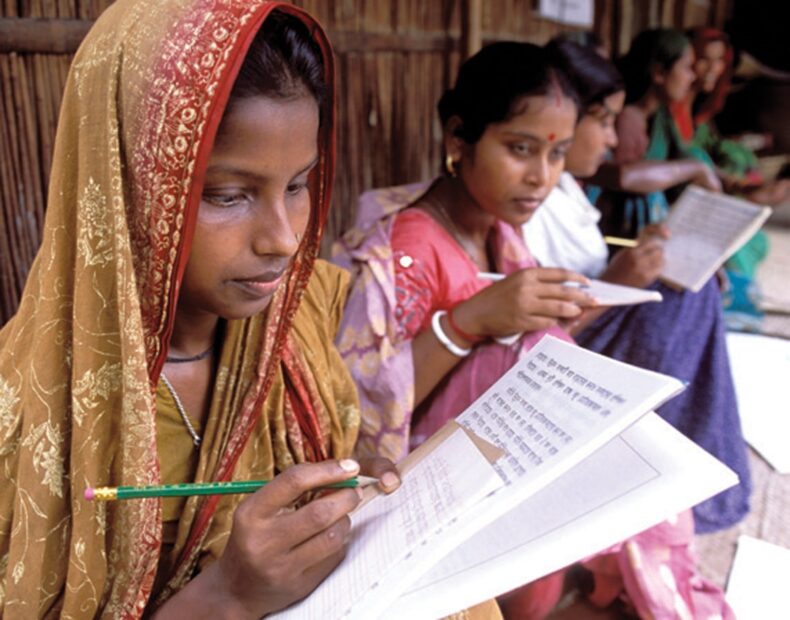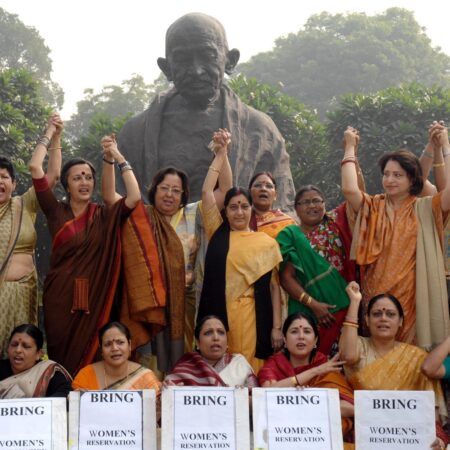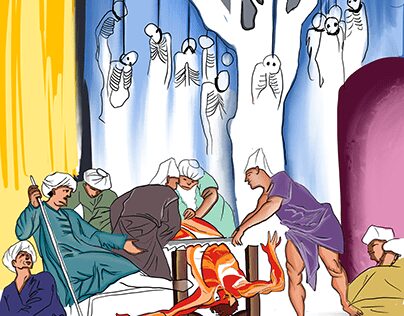According to the Nsso report, women’s education has increased by 68% from 9% aroundthe years nearing independence.
Currently, Kerala stands at the Ist position with a total literacy rate of about 92.2% , followed by the union territory of Lakshadweep with 91.85%, and Mizoram with a 91.33% literacy rate.
According to a report by the world bank, only 1 in 11 girls were literate during Indian independence.

It was low initially because of various factors. The biggest reason was the socio-cultural set-up of Indian society. Indian society has had a long tradition of women’s subjugation.
Starting with the Varna-jati system which concluded women as impure. The Indian society was divided into four varnas:Brahmins, Kshatriya’s, vaishyas and shudras. Each Varna was supposed to act according to its Varna, inhibiting a choice of opportunities for Shudras and women at large. This was acclaimed as religious duty and those who transgress it were punished.
This discrimination against women became stark when the varna system degenerated into the jati system. Women were subjected to early marriage, service to men etc.
A man from the Brahmin marrying a woman from shudras which was considered as a lower varna, their marriage was called as impure. There has a tremendous improvement in the enrolment rate and literacy rate of women, following the period after independence.
The other reasons include the opportunity cost of school, considered as high by society and lack of awareness.
The ratio of women school dropouts stands at 12.8% , and at the secondary level, it is 9.8%.

The school dropout ratio is higher compared to the males due to the prevalence of early marriage and lack of awareness.
It can be seen from the report that the urban areas have performed better, wherein the total literacy rate is 84.11% compared to the rural areas standing at 67.77%.
The ministry of education has started the Samagra Shiksha scheme in 2018-19 to promote inclusive education and quality education at the elementary and secondary levels. The scheme is being sponsored by the central and state govt on 60:40 contributions.
Although the literacy rate of women has steadily gone up, their representation is low in professional, technical and management courses.
Currently, the enrolment rate of women in engineering courses is 30% compared to the men’s enrolment rate standing at 40%.
According to the survey by the ministry of education, about 20.1 million women were enrolled in professional courses compared to 8.8 million in 2019-20.

Though it has increased, but still low. Their enrolment at post-graduation in professional courses is saddening compared to the UG level.
Steps taken by women’s central govt to improve women education.
Beti Bachao Beti Padhao scheme: It was started to improve awareness and welfare services for the girl child. Initially, it aimed to solve the low child-sex ratio, education and survival of women.
Digital gender atlas: It is being run by the Ministry of human resources development to advance girl education.
National scheme for incentive to girls for secondary education: To reduce the dropouts and enrolment improvement of women at secondary level.
Sarva Shiksha Abhiyan: It aims to open schools, the appointment of additional women teachers, separate toilets for women . It targets elementary education.
Udaan: It is being run by CBSE to provide free online resources to girl children for classes Xi and Xii.
Stem education: To increase supernumerary seats for women in the IITS and NITS in science, technology, engineering and mathematics.













